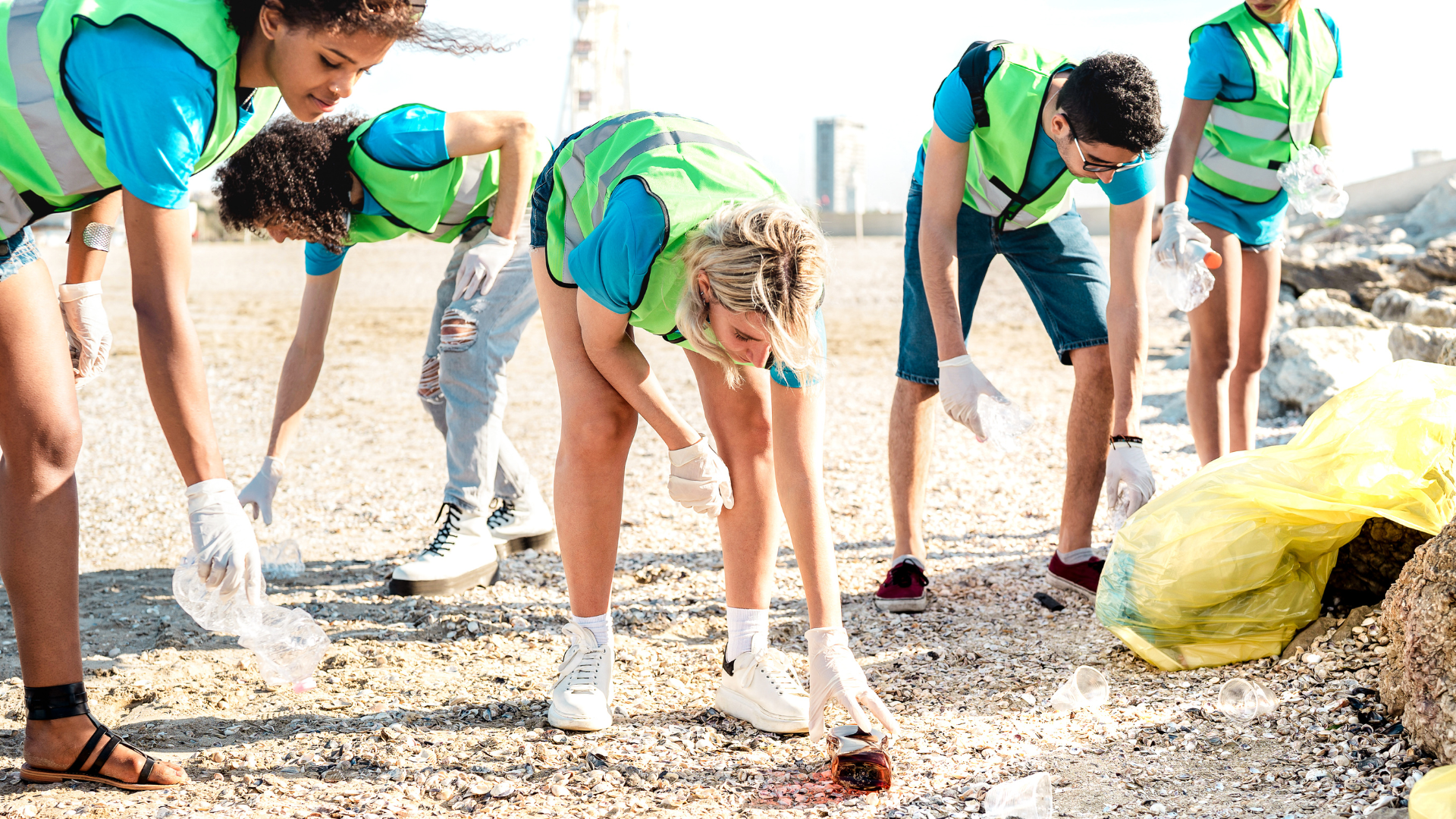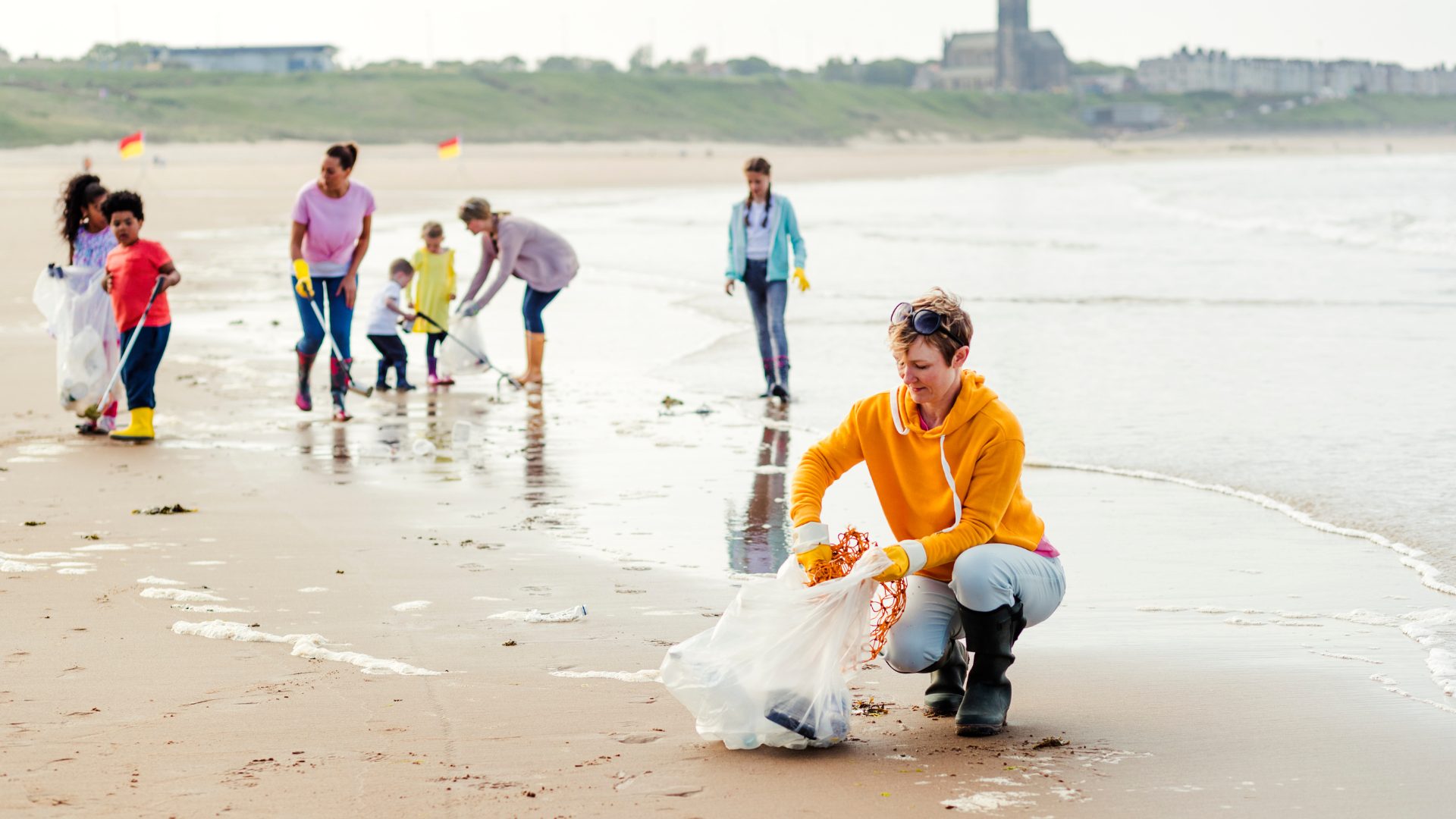Stepping away from your desk, routine, and devices to dive into nature can be a rewarding and life-changing experience. Because 56% of the world lives in urban areas, oftentimes the amount of greenspace — the areas in your neighbourhood where natural flora grow — is lacking, so it’s important to get outside. A study sponsored by Scientific Reports found that just 120 minutes a week out in nature can have incredible effects on your health such as lower risk of obesity, mental distress, and birth complications.
Environmental volunteering can give you these benefits and so much more.
What is volunteering for the environment?
Environmental volunteering means spending time supporting nature in some way. This could look like planting trees, cleaning up trash, or anything else that helps preserve the environment. You could support a better future for nature by simply cutting down on your use of plastics, riding your bike more often than you drive, or growing your own food. Volunteering for the environment can go a lot deeper so that the impact is even larger.
When you sign up to participate in environmental volunteering, you get the chance to make a positive influence on the world around you. Your local environmental conservation and preservation organisations could use your help, or you could travel abroad and make seeing the other countries an enriching experience.
There’s an opportunity out there that can not only push your comfort zone, but also play on your skills, curiosity, and desire to do more good for the environment.
How to get involved?
Taking part in a programme could be as easy as an internet search for local environmental volunteering. But, if you have your eyes set out past the horizon, then you may need to refine your keyword. Do you have a country in mind? International Volunteer HQ can help you find the project that speaks to you the most.
If you don’t want to go it alone, encourage your friends and family to join or even volunteer through work! Working with your colleagues can bring the company together on common ground and improve brand reputation as well — signalling to customers that the business cares about the world around them as well. When a group of people volunteer, everyone benefits.

Types of Environment Volunteering Opportunities
But, what type of volunteering should you do? There are a number of possibilities, so let’s cut these into categories to help you uncover the best one for your interests and talents.
Nature Volunteering
This can look like any number of things, depending on the activities you’d prefer to do.
When you look outside your window at the nearest tree, there’s a lot more that keeps that organism alive than just sunlight and water. Volunteer work could look like weeding out invasive species, being part of a biodiversity action team to cultivate a thriving ecosystem, or helping out the wildlife biologists at a national park to keep the trails clear.
Let’s break this down even further:
- Eliminating invasive species: As humans have travelled across the seas and borders, they’ve brought with them various species of plants and animals that weren’t native to the local environment. As a result, endemic species have suffered. You could help eliminate further threats by fishing, hunting, or cutting down invasive organisms.
- Planting local foliage: Similarly, planting species that are indigenous to the area you’re working in can help build up the land that once thrived in the area. Birds, insects, and animals that used to live in this space could return to their natural habitats as a result of this work.
- National forest preservation: Forests offer a home to thousands of plants, insects, and animals. Threatening their environment means putting their lives at risk. The process of building back up a national forest is called reforestation and helps to restock the area with trees.
- Trekking guide: Guiding interested parties through a nature trail can be a fun and gratifying way to volunteer in the environment. You have the chance to show people the best way to navigate the trail, point out interesting fauna and flora along the way, and guarantee that they don’t disturb any critical areas.
Animal Conservation
Caring for wildlife means ensuring that future generations can enjoy nature and these animals as well. Local wildlife establishes biodiversity in an area. Every plant and animal is connected in a food web that helps balance the environment on a local and global scale. So, environmental conservation also includes wildlife nature reserves.
Here are a few ways you can lend a hand:
- Care for injured wildlife: Volunteers can help rescue and rehabilitate hurt or previously captured animals. For this opportunity, the volunteer must be over the age of 18 and likely have some training before getting started.
- Marine conservation: Cleaning the ocean, caring for ocean creatures’ environments, and preserving marine landscapes all work together to support a healthy ecosystem.
- Sterilise feral cats and dogs: Abandoned domestic animals have become serious threats to the local environment in many parts of the world. If you have the coaching or just want to assist where you can, spaying or neutering rescued domestic animals can have a big impact on local environmental sustainability.
Environmental volunteering doesn’t have to be exclusive to local opportunities, it could be building up nature reserves in South Africa, or protecting reef life around the United Kingdom. Any volunteering opportunity can help ensure a positive future for Earth.
Online Environmental Volunteering
If getting out into nature isn’t your thing but you do care about sustainability and nature’s future, you could contribute valuable research and development hours for the cause. This may be anything from identifying animals on a webcam to naming manatee calls.
Online volunteer opportunities can help further the research scientists need to continue their work.

Travel the World and Support Local Environments
Volunteering can add value to the area around you and help local people conserve their natural environments. Whether you’re helping out locally or travelling the world, you can learn more about the natural space around you and pick up new skills along the way. While in the field, you can develop abilities that could help you advance your career in the future by adding valuable work experience to your resume.
What’s more, these opportunities can help you build your network for future volunteering chances or even a career in the field. Connecting with people while working on a common interest can help build rapport and a good reputation in the sector or industry you’re working in.
Making an Impact
Many people have an interest in environmental volunteering, but not everyone plays an active role in making these projects happen. You could launch a volunteering programme to make this change. Or, you can manage your volunteers’ interest through an automated process that helps you keep them engaged. Rosterfy’s platform takes the pressure off your team.
Rosterfy exists to connect communities to events and causes they’re passionate about through volunteer and paid workforce management technology. Our proven end-to-end technology allows charities, events, and nonprofit organisations to recruit, register, screen, train, manage, and report with ease, replacing manual processes with automations to better engage and retain your volunteers and paid staff.
About Rosterfy
Rosterfy is used by non-profits, charities, sporting federations, and more to better manage their volunteer programs by improving how they can recruit, screen, train and retain volunteers.
Our market leading technology helps you create engaging experience throughout the whole lifecycle of your volunteer journey.
Book a demo today.
Keep reading more on our blog
Read more helpful articles on our blog: